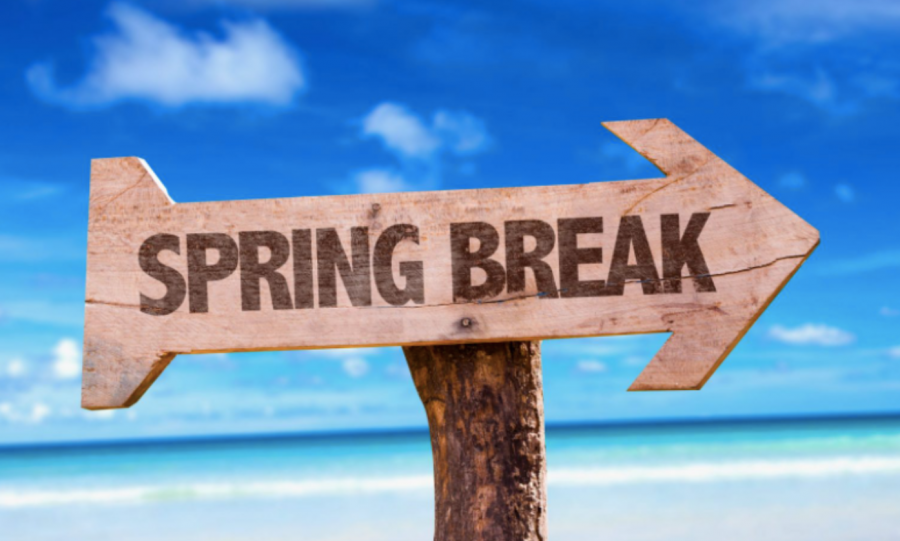The Ever-Changing Definition of “A New Normal” and How Spring Break Has Shaped It
April 30, 2021
Almost exactly a year ago, a newly discovered virus quickly infected the world and started a global pandemic. While flowers were blooming and Hunterdon Central, along with hundreds of thousands of other schools in the U.S., was getting ready for spring break, masks and social distancing rules were implemented, traveling out of the country was prohibited, and the nation was stuck at home in quarantine. Every in-person event imaginable was canceled and there was no information or hope about what was going to happen next or how we would ever recover.
Now, 13 months later, spring break season is back in full swing. With the distribution of COVID-19 vaccines steadily increasing every day, it has been tempting, and even in some situations deemed safe by health professionals, to finally reunite with family members and finally start getting back to normal.
This year, the CDC is hoping that with a repeat of their holiday guidelines against travel, they will be able to keep outbreaks contained, “CDC recommends that people not travel at this time, and delay spring break travel until 2022,” a CDC spokesperson told The Washington Post. There have been many stricter rules implemented this year. A limit on group gatherings, restrictions at hotels, restaurants, and bars, and masks are (in most states) mandated when going anywhere. At least 67 colleges, from huge state schools to smaller private schools and Ivys, have changed their spring break schedules, eliminating the week-long time off to help reduce the spread.
On a more personal note, I have also noticed a drastic change in the way my own school community at Central has handled the second pandemic spring break differently than the first. Last year, I was not able to see any of my friends and the big trip I had been planning with my family for months had to be canceled at the last minute. It was a small price to pay for the well-being of everyone around me, but was still really disappointing at first. It was a mundane spring break for us all, especially being in only the second month of a seemingly never-ending quarantine. It wasn’t really a week that we could use to relax or take time off because of all of the stress involved in just functioning during a completely new situation. No one had experienced anything remotely close to this before 2020, so it was almost as if the whole world was holding its breath and spring break was pretty much forgotten as soon as it was over.
It seems as though the world has finally exhaled, however, and this year it was as if we were finally seeing the light at the end of the tunnel. With vaccines rolling out and school back in person for four days a week, I think almost everyone–including my family–felt at least a little bit more relaxed about the situation we have been in for a year now. We finally got to go on a long-awaited and highly anticipated vacation now that tests are much more accessible and my parents are vaccinated (still, of course, quarantining when we returned).
This is not to say that the pandemic is resolved by any means. Because it isn’t. Cases are still much higher here than almost anywhere else, and it is imperative to the well-being of everyone to stay as safe as possible, now more than ever. I think more than anything this spring break felt like we were finally adapting to the world in our current situation, no matter how unfortunate it may be at times. Life will continue to be hard for the remaining time of the pandemic, but having a much more normal, carefree spring break gave me hope for the future.
